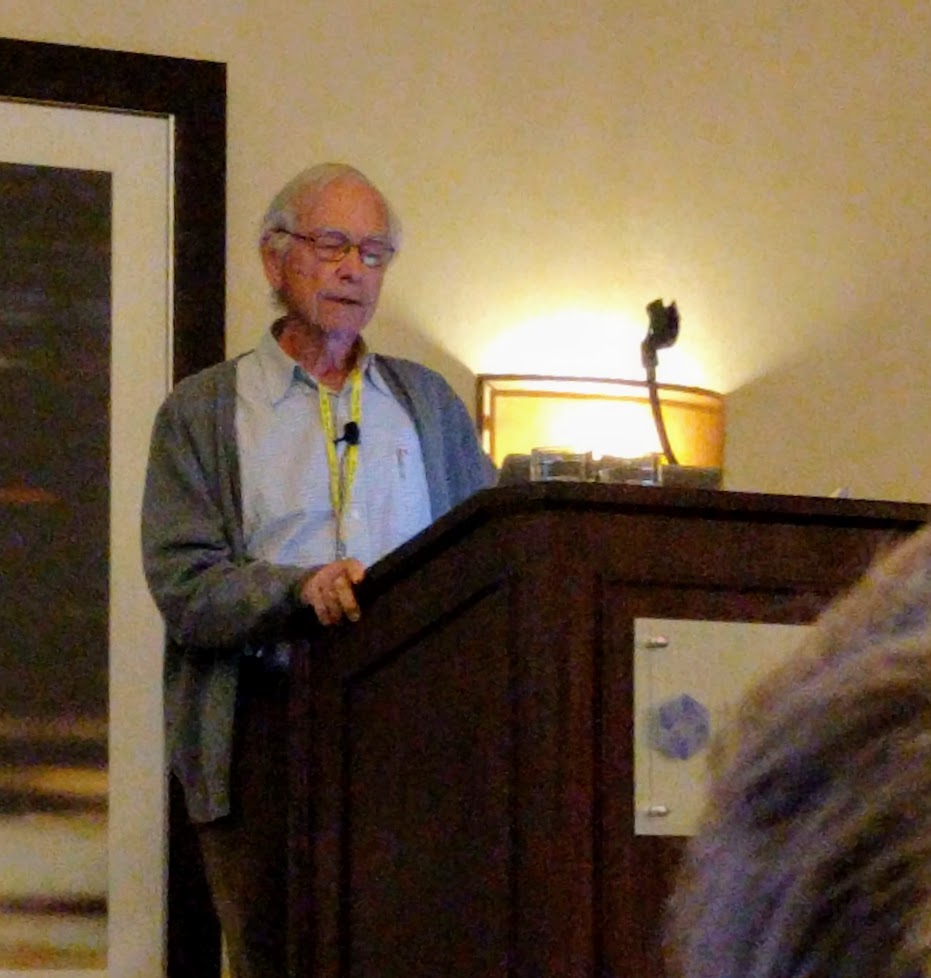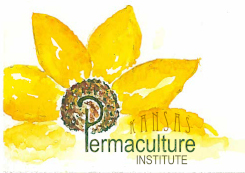Allan Savory was the guest of honor at the No-till on the Plains conference in Wichita, January 30-31, 2018. These are my notes from the sessions I attended.
Regeneration and Resilience in Farming Systems
Sarah Singla, French No-till farmer
- Growing wheat, triticale and other grains
- One of the first no-till farms in France, Singla has never plowed
- Don’t look backward asking why when you can look forward and ask why not
- Success in farming: produce nutrient-dense food, improve quality of life, respect environment
- Must improve knowledge of soil and farming if we want to keep farming
- French farmers terrace but erosion is still a major problem
- 1 mm of soil loss on a hectare is 1000 cubic meters lost, or $10/acre/year
- The best part of the soil is what gets eroded
- Nature tells us we must cover the soil with living plants.
- Cover cropping is not new, was being taught just a century ago.
- Good soil structure is 50% empty
- 1 gram of healthy soil has more than a billion bacteria, 15 million bacteriophages, 250 million archaebacteria, 100K protozoa, etc.
- Root exudates come from photosynthesis and feed the soil microbes.
- Principles of working with nature are the same around the globe, but don’t look for recipes.
- No-till doesn’t work by itself: needs cover crops and rotation.
- Cover crops are not a cost, they’re an investment.
- Darker colored cover crops warm the soil more in spring - significantly less snow and more early corn growth.
- Key to success with cover crops is to manage like a cash crop. Use viable seeds and good genetics. Fertilize if necessary.
- Choose the cover crop depending on the next cash crop for that field. Choose complimentary species.
- Choice must also depend on the location - soil type, length of season, etc. Water is often the limiting factor.
- Start with species you know, then try new ones.
- Seeding triticale directly into cover crop mixture; cover crop dies by harvest time.
- Optional grazing of cattle on cover crop mix prior to planting cash crop.
- Must be ready to plant at harvest time, even a few days’ delay can drastically affect growth.
- Relay cropping: winter wheat and soybean in alternating rows, plant one before harvesting the other.
- rape/canola has significantly fewer pests when planted with lentils. Just 1% early sweet corn planted with crop corn will draw away all the borers.
- First lesson: diversify by adding new crops to the system, changing your rotation -- be inconsistent. Introduce animals and enjoy grazing.
- Instead of 1 cow / 1 acre, 365 days, use 365 cows on 1 acre for 1 day. Multiple types of livestock in rotation.
- Second: create and catch added value. Be a price maker, not a price taker.
- Third: Provide nutrient-dense food.
- Must network with other people to share knowledge and reduce risk of failure.
- KNOWLEDGE = 96%, HARDWORK = 98%, ATTITUDE = 100%
- Main reason people fail is that they give up just before success.
- Weed control: rotation first, then minimize soil disturbance, finally use herbicide. Not the reverse.
Valuing Soil Health
Jill Clapperton Ph.D, Rhizoterra Inc.
- Plant cover stops soil and water erosion. Standing stubble makes a big difference in winter.
- When soil is lost, soil biology is lost.
- Soil is habitat for microbes as well as plants. You build it, they will come.
- Soil health = chemical, biological and physical; soil productivity = food quality, environmental quality, and human health.
- Continuous soil pore networks are important for the critters that can’t burrow, such as protozoa and nematodes. This is one reason soil compaction is a problem, and why no-till farms take a few years to get cooking.
- Mycorrhizal fungi hold it all together, pull particles together and create pore space.
- Deep rooted plants break up compaction and layering better than tillage because they introduce mycorrhizae and other biology.
- Stable vs effective/soluble organic matter
- corn/soy rotation causes net loss of carbon, but corn/forage is net gain.
- Removing bare fallow from rotation has the biggest impact on soil carbon gain, about ⅔ more.
- Perennial rye is overrated as a cover crop because it changes the soil structure. Annual rye is better. Crested wheatgrass (CWG) is also bad for soil structure.
- Earthworms and other soil animals love mustard and canola. Can double your earthworm population in one crop.
- Nitrogen from cover crops results in 10% more essential amino acids than chemical N.
- Peas and beans produce more complex forms of N than white clover, which produces mostly nitrate.
- Harvesting a field of mustard releases mustard gas, effective pest control.
- Chemical N applied to wheat results in poorer quality proteins (but more of them).
- Zinc is one of the most important factors in food quality. It acts as a check valve on iron. In an infection, zinc stops iron flowing to the inflammation. Brassicas are a great source of zinc and other helpful nutrients. Alzheimer’s is also related to iron and zinc, and black soybeans are particularly good for mitigating the effects.
- One size does not fit all in terms of remediating deficiencies. Depends on physical, chemical, and biological soil characteristics.
Basics of Holistic Management
Byron Shelton
- Nature functions in wholes, cannot be managed reductionistically.
- Problems of biodiversity, desertification, and climate change are all related
- Basic problem is that we’re letting carbon and water escape into atmosphere instead of sequestering in the soil.
- Regenerating soils is a holistic solution to the holistic problem.
- Livestock are not a problem, mismanagement is a problem.
- Brittleness: regularity of moisture, matters for growth and decay. Measured 1 to 10. Not amount of moisture, only regularity.
- If you see only green growth, that means landscape is non-brittle, has regular moisture and regular decay of dead matter.
- Brittle landscape has gray, old, but non-decayed plant matter.
- In a brittle landscape, the only regular moisture above ground is IN THE ANIMALS. Ruminants are mobile fermentation vats. Removing them from the landscape breaks the ecosystem.
- Predator/Prey and Timing are the other two factors.
- Predator/Prey dynamic can be replicated with fencing. Need to keep livestock together in a mob.
- Timing of grazing determines root depth of plant growth. Need full root recovery every time regardless of type of livestock, or even mowing or fire. Full plant recovery can take anywhere from 21 days to over a year.
- Fire is a management tool, but so is encouraging beaver and other organisms, or allowing the land to rest without active management.
- Holistic Management begins with financial planning, then land planning, grazing, and monitoring.
- Agriculture, economics, and social relationships are all soft sciences requiring complex decisions.
- Identifying what you are managing is crucial.
- The holistic context: what are your desires? Quality of life, future resource base. Write your context with no specific actions.
- Feedback loop: need to monitor whether plan is working, and adapt plan accordingly.
- Three basic sources of wealth: solar, paper, or mineral. Only solar is sustainable.
- Holistic grazing chart is based on a British military academy planning chart; nothing else could handle the complexity.
- Savory Institute aims to restore the world’s grasslands through Holistic Management.
The Carbon Key: Soil Biology Regenerates Soil to Improve Resilience and Human Health
Dr. Kristine Nichols
- Maximizing return on investment: increase yield, increase quality, or reduce losses.
- Challenges in ag: volatile markets, high input and energy costs, high equipment costs, climatic extremes, soil extremes, consumer concerns.
- Soil salinity increasing in North Dakota due to mismanagement: soil is impermeable from overtilling, salt wicks up through standing water, water evaporates leaving salt near surface.
- Soil health is defined as the continued capacity of soil to function as a vital, living ecosystem sustaining plants, animals, and humans.
- We are still losing 1.6 billion tons of topsoil per year.
- Snirt: dust blows off fall-tilled fields and sticks to snow, causing snow to get colder because of salt, takes longer to melt in spring. It’s the best soil that blows away.
- We have one problem: not enough carbon in soils. Everything else is derived from that.
- Rodale study: soil OM increased in % and in depth with both manure and legume supplementation, but decreased with conventional supplementation.
- Interactive carbon economy: plants feed fungi and bacteria; nematodes and protozoa eat bacteria and fungi; microarthropods prep residues for bacteria to digest.
- Most of the tree of life is microscopic. But the largest organisms in the world are microscopic fungi. We can see them because hundreds of thousands of threads are laid on top of each other.
- Microbes create their own homes -- microaggregates -- which we destroy when we till.
- Soil needs to be fed all the time, even in winter.
- “The Brown Revolution” principles: maximize living roots, diversify, add livestock, minimize soil disturbance, keep the soil covered. No-till is only number 4 in this list. Living roots are number 1.
- Food nutrients have declined because of crop breeding, soluble fertilizers, and soil degradation.
Regenerating our Soils: Rejuvenating our Farming and Ranching Life
Jimmy Emmons
- “The master has failed more times than the beginner has even tried.” --Stephen McCranie
- Since adopting no-till, Emmons farm has cut fuel cost by ⅔ and fertilizer cost by ½.
- Methods to evaluate: letting nature take its course, tilled, no-till, no-till with cover crops, no-till with covers and livestock.
- Nature’s method is very dynamic and complex, has no waste, self-sustaining and regenerative.
- Tilled method creates ideal conditions for monocrops but degenerates over time. Can’t find any pros but lots of cons.
- No-till without cover has a bare fallow period in which soil microbes have to work harder for food. Soil still degrades, just not as fast. Saves time and money, erosion; but requires herbicides and increases compaction.
- No-till with cover crops keeps the soil covered during fallow period, prevents degradation and increases infiltration. Lots of pros; only cons are logistics. Complex and difficult to manage.
- Adding livestock accelerates soil health by getting nutrients back to the soil quicker. Graze the cover crop and allow it to regrow before terminating. Still complex to manage, requires infrastructure for livestock and sacrifice areas.
- Give a new system 3 years before judging its success. First two years are guaranteed not to go well.
- First mistake: before planting first cover crop, did vertical tillage in part of field. Untilled area had extra benefits at no extra cost.
- Cover crop does use more water, but you gain it back and more in increased infiltration.
- University said he must be cheating on soil tests, so NRCS helped do a study with GPS points.
- The cheapest way to keep away a weed is with a seed.
- Grazed only about 22% of cover crop but gained $115 in beef per acre.
- Mechanically removed eastern red cedar from rangeland and burned it to restore running water to the creek.
- Training cows to follow the mobile water trough rather than relying on hot wire.
- Planted a 3-acre vegetable crop, multiple species interplanted with cover crop, for the food bank. Volunteers came to harvest, completely filled a pickup with 2570 lbs of vegetables.
Livestock are Essential to Achieve Lasting, Regenerative, and Profitable Farming
Allan Savory
- Have learned to manage complexity mainly by accident. Formal training got in the way.
- Found that wildest areas of Africa were also deteriorating without livestock
- Was a very intense environmentalist as a young man, had to reverse his opinions on livestock once he saw they were part of the solution and not the problem.
- Having worked out the management plan, some ranchers started to fail and blamed Holistic Management, but one got divorced and the other was taking World Bank loans.
- There is no other business in the world more complex than agriculture.
- If farmers fail anywhere in the world, it will be felt everywhere due to violence. We’re all in it together.
- Desertification is happening on every continent. Brittleness concept was developed to explain how areas with heavy rainfall can desertify. It’s the irregularity of the moisture, not the amount.
- Non-brittle environments are humid throughout the year even if there’s little rainfall. Ruins of civilizations there are covered by renewed biodiversity.
- Ruins in brittle environments are buried in desert sands.
- Rainfall in brittle environments becomes ineffective. Rain flows across soil or evaporates. Effective rainfall penetrates the soil and only leaves by transpiration or underground flow.
- In a non-brittle environment, desertification is not a risk because soil will always get covered.
- Desertification leads to droughts, floods, poverty, emigration, cultural destruction, loss of biodiversity, violence, and climate change. Greater threat than all the wars ever fought.
- American universities are contributing to terrorism because we’re teaching people from overseas to contribute to desertification.
- In brittle areas, perennial grasses are the only plants that can survive, but in the absence of grazing, they oxidize in sunlight because there’s no biological decay. Cycle of life cannot be maintained without decay.
- We are a tool-using animal; cannot do anything without tools. Technology, fire, rest, and planting are the four tools we have.
- Technology cannot help with these oxidizing plants in the absence of biological decay.
- Fire seems like a solution but only substitutes rapid oxidation for slow oxidation.
- Rest doesn’t work either, in the absence of animals. National parks are desertifying as well. “We really have got the bull by the udder.”
- Planting trees in brittle landscapes is completely ineffective because it doesn’t address the problem.
- But brittle environments are the environments from which all the large herbivores came. Large herbivores are the missing piece that allows brittle environments to be productive.
- Herding animals do not self-regulate their populations, so they need predators to do that for them.
- 60 years ago Andre Voisin observed that overgrazing is a factor of time, not numbers of livestock. To this day no research connects overgrazing to animal numbers rather than time. It’s about careful planning, not a management system such as rotational grazing.
- There are tons of management systems derived from Voisin & Savory, but all are less effective than going to the source and doing the holistic planning, because they don’t address the full complexity of the system. All management systems fail to deal with complexity.
- Planning system came from the Rhodesian Army. People can be trained to use it in under two hours. When they stop using it in favor of a system, they fail every time.
Rethinking Minerals and MIcrobes: Addressing the Links between Soil Biology, Plant Nutrition, and Crop Physiological Health
Joel Williams
- Photosynthesis creates sugar, but only in the presence of micronutrients. Sugar is the basis of more complex carbohydrates, but only in the presence of micronutrients.
- We love to obsess about N, but there’s an abundance in the atmosphere -- 78K tons per hectare of land. But only microbes can make it accessible.
- Mineral constraints to biological N fixation: Mo, Fe, Co, B, Ca, Ni
- Distinction between primary, secondary, and tertiary nutrients is wrongheaded. Mulder’s chart illustrates antagonism and stimulation among all the plant nutrients.
- Most of soluble NPK is not taken up by plants (especially phosphorus)
- Too much emphasis on soluble nutrients. That’s how you lose them. Most nutrients are insoluble but available through soil biology.
- Soil death (decay) is as important as soil life. Organic matter feeds the soil food web along with exudates.
- It takes only about an hour for carbon absorbed as CO2 to be released as exudate in the soil.
- Humus is built by fungal biomass; the more fungi, the more humus gets built. Bacteria produce smaller chain carbohydrates that wind up as CO2.
- Mycorrhizae are also key to soil structure, forming microaggregates.
Panel discussion on soil biology
Dr. Jill Clapperton, Dr. Kristine Nichols, Adam Chappell
- Cover crops are the best defense against Palmer pigweed in Arkansas.
- Neighbor pressure is real; neighbors told landowners that Chappell was going out of business and they wanted his land.
- Clapperton started with lentils and flax, found that they both yielded more when grown together. Other combinations don’t get along, like corn and canola.
- There is no evidence that we need to have a weed-free, monoculture system. That is dogma. The evidence shows the opposite.
- Quitting pesticides and fertilizers shouldn’t be done cold turkey when starting no-till, but can cut dramatically. Don’t need seed coatings anymore. When pests are sighted, wait a day or two to see if predators show up.
- Maximizing any one element such as mycorrhizal fungi is a misstep because they can’t survive on their own.
- Log in to post comments






Comments